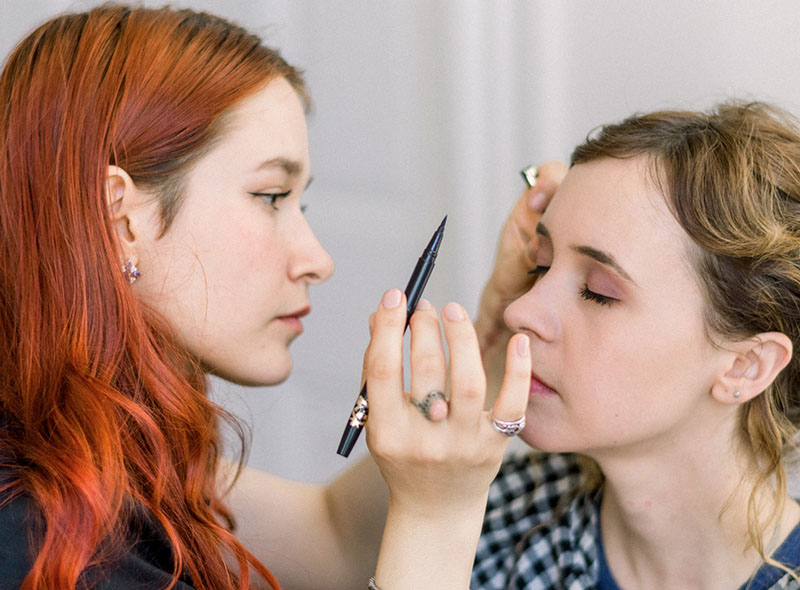The art and science of permanent makeup goes by many different names: micropigmentation, permanent cosmetics, derma pigmentation, intradermal cosmetics, dermagraphics and cosmetic tattoos. As the procedures associated with permanent makeup become more mainstream the public becomes more aware of the benefits, especially for individuals that suffer from illness, disease, injury or scarring. In my recent article “Building a Bridge: Cosmetic Surgery and Micropigmentation” I explored the relationship between cosmetic surgery and permanent makeup. I would now like to discuss how permanent makeup can work as part of the solution for a variety of medical conditions.
Physicians as Partners
According to the Third Edition of “Medical Issues for Permanent Cosmetic Technicians” published by the Society of Permanent Cosmetic Professionals “permanent cosmetic professionals are part of a new and exciting trend in the aesthetic medical arena”. It goes on to say that plastic surgery and dermatology centers are now offering permanent makeup procedures in order to attract new patients. At times physicians recommend permanent makeup to compliment other cosmetic procedures, such as Botox or a face lift, but it also helps the patient feel better about themselves and the way they look during or after a difficult illness or injury. The artistic eye of a trained permanent makeup practitioner can analyze color and form to achieve the best look when the doctor has exhausted medical and surgical options.
Know Your Medical History
It is important that the permanent cosmetic professional inquiry into a client’s medical history. For specific medical related issues, the physician should approve the procedure. Healing time and the strength of the immune system are incredibly important. Some of the most common medical conditions that warrant permanent makeup are cancer patients experiencing hair loss due to chemotherapy and areola repigmentation after breast reconstruction. It is preferable to have permanent makeup applied before chemotherapy or in the early stages of treatment to reduce stress and promote healing. A Doctor’s release should be provided. Permanent makeup can also be used to assist patients that suffer from Vitiligo-the absence of pigmentation in the skin, Trichotillomania-a condition that causes compulsive plucking of hair or Alopecia-a condition that leads to complete or partial hair loss. Permanent makeup can also help Hypothyroid patients who have thinning eyebrows. Individuals who have recently had a facelift or plastic surgery should wait until their physician has determined they are healed, this can take six months or more, but patience will guard against infection. Anyone with medical issues that create a higher risk for infection, such as an artificial hip, mitral vale prolapse or autoimmune disorders should be on an antibiotic. If you are on medication consult your doctor, it is essential that you do your homework.
Toxicity Issues and Camouflaging Scars
Permanent makeup is also a viable alternative for individuals that suffer from allergies or toxicity issues. Patients should talk with their doctors about potential side effects related to pigments then consult a trained permanent makeup practitioner. In many situations, the pigments are less toxic than applying conventional cosmetics every day. Individuals that suffer from arthritis, loss of vision or neurological problems that cause painful or unsteady movement of the hands can also enjoy the freedom achieved through permanent makeup. In her book “The Essence of Beauty” Dr. Adrianna Scheibner, M.D. says in Chapter 9 “the applications of the procedure [derma pigmentation] within the realm of medicine are numerous”. “In the past few years,” Scheibner continues, “corrective camouflaging has emerged as a useful service to dermatologists and plastic surgeons when they can no longer medically improve a patient’s appearance”. Camouflage, applied by an experienced permanent makeup professional, is a tricky procedure. In the “Procedures of Macro-Theory Dermagraphics” printed by the American Institute of Permanent Color Technology it states that “the application of camouflage is unlike any other procedure…when applying camouflage you actually are taking something away, or diminishing something that already exists, from the skin. Because of this, camouflaging is an imperfect procedure”. Camouflaging is difficult and the results never exact. Camouflaging strives to recreate the skin’s natural appearance; realistic expectations are essential with this type of procedure. Also, when seeking assistance with scar camouflage the procedure should be done when scars are a pale white color, not red or pink.
There are many potential issues when a candidate for permanent makeup suffers from illness or injury. The permanent makeup professional you choose should have experience and provide you with referrals from previous clients and a portfolio. An experienced permanent makeup professional will know the right questions to ask during your initial consultation and will guide you through the safest and healthiest way to looking your best. To learn more about permanent makeup visit my web site www.DawnColors.com.

